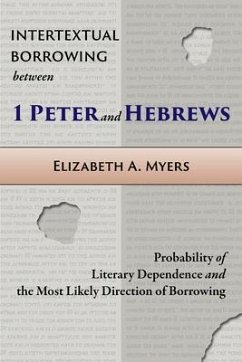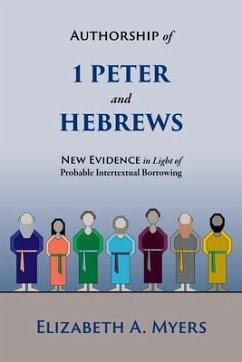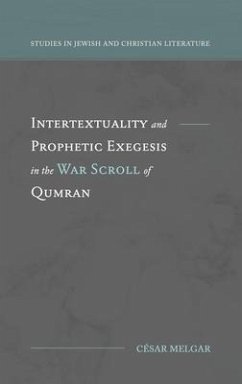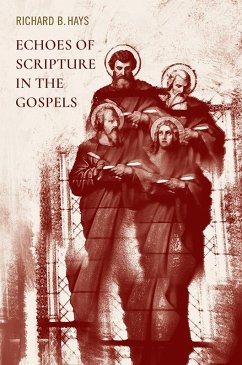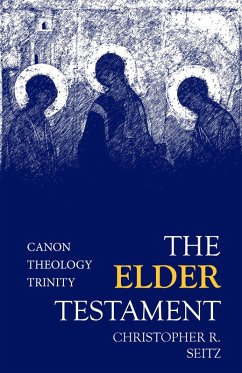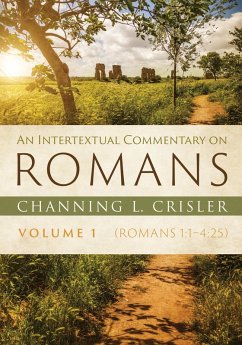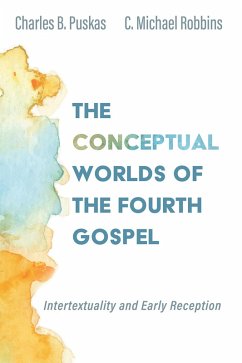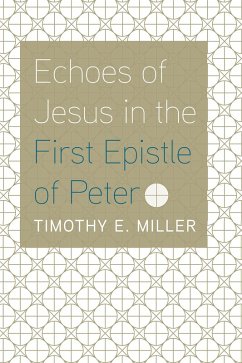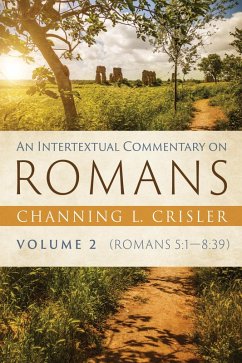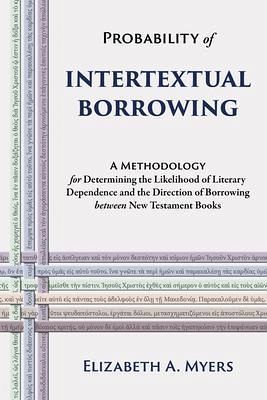
Probability of Intertextual Borrowing (eBook, ePUB)
A Methodology for Determining the Likelihood of Literary Dependence and the Direction of Borrowing between New Testament Books

PAYBACK Punkte
37 °P sammeln!
OVERVIEW: The curious presence of numerous conceptual and verbal parallels between the New Testament writings is one of the most enigmatic phenomena of biblical literature. What might explain the presence of these parallels? What is their significance? The phenomenon has raised the intriguing possibility that the authors of NT books which contain parallel texts may have borrowed written material from one another. Such a possibility could lead to far-reaching implications, not only for matters pertaining to origin of the NT documents, but also for exegetical study of the interdependent NT books...
OVERVIEW: The curious presence of numerous conceptual and verbal parallels between the New Testament writings is one of the most enigmatic phenomena of biblical literature. What might explain the presence of these parallels? What is their significance? The phenomenon has raised the intriguing possibility that the authors of NT books which contain parallel texts may have borrowed written material from one another. Such a possibility could lead to far-reaching implications, not only for matters pertaining to origin of the NT documents, but also for exegetical study of the interdependent NT books. The true significance of parallels for the likelihood of intertextual borrowing, however, has been shrouded in mystery throughout the long history of NT scholarship, primarily due to the lack of commonly accepted methods and defensible criteria for evaluating the parallels. In this book, Elizabeth Myers introduces an innovative assessment methodology that can objectively gauge the significance of literary parallels for the likelihood of borrowing by the authors. In order to ensure consistent and reliable results, the methodology approaches the task as a mathematical probability analysis. Myers first explains in detail how the likelihood of a direct literary connection and the most likely direction of borrowing can be determined by applying probability theory to literary parallels observed between NT books. Readers are then guided through two practical applications which demonstrate both usage and reliability of the methodology: First, a case involving two books that bear little resemblance to one another (James and Philippians), and second, a case involving two NT books that exhibit many striking literary parallels (2 Peter and Jude).
KEY FEATURES: The book presents rationale and detailed descriptions for each step of the methodology for determining the likelihood of literary dependence and the direction of borrowing between NT documents. This includes critiques of published methods and traditional criteria used to evaluate the significance of intertextual parallels, thorough explanations of how literary parallels can be objectively evaluated for intertextual borrowing using probability theory and relevant literary indicators, and multiple illustrative examples. The described methodology can easily be adapted for use with documents in other collections of ancient works such as the Septuagint, the Pseudepigrapha, and even the Hebrew Bible. Practical demonstration of the methodology involves evaluation and selection of an appropriate negative test case (James and Philippians) and an appropriate positive test case (Jude and 2 Peter), specification of criteria for selecting literary parallels to be included in the analyses, identification of parallels between the documents of interest that satisfy the selection criteria, demonstration of how to use the defined scoring scheme to extract the necessary data from each literary parallel included in the analyses, step-by-step execution of the probability calculation with actual data, and explanation of how to interpret the results. The front matter of the book includes a list of contents, a list of 46 figures, a list of 56 tables, and a list of abbreviations. The back matter includes appendices with tables of supporting data from the analyses, a list of works cited, an extensive index of Scripture and other ancient sources, and an index of modern authors.
KEY FEATURES: The book presents rationale and detailed descriptions for each step of the methodology for determining the likelihood of literary dependence and the direction of borrowing between NT documents. This includes critiques of published methods and traditional criteria used to evaluate the significance of intertextual parallels, thorough explanations of how literary parallels can be objectively evaluated for intertextual borrowing using probability theory and relevant literary indicators, and multiple illustrative examples. The described methodology can easily be adapted for use with documents in other collections of ancient works such as the Septuagint, the Pseudepigrapha, and even the Hebrew Bible. Practical demonstration of the methodology involves evaluation and selection of an appropriate negative test case (James and Philippians) and an appropriate positive test case (Jude and 2 Peter), specification of criteria for selecting literary parallels to be included in the analyses, identification of parallels between the documents of interest that satisfy the selection criteria, demonstration of how to use the defined scoring scheme to extract the necessary data from each literary parallel included in the analyses, step-by-step execution of the probability calculation with actual data, and explanation of how to interpret the results. The front matter of the book includes a list of contents, a list of 46 figures, a list of 56 tables, and a list of abbreviations. The back matter includes appendices with tables of supporting data from the analyses, a list of works cited, an extensive index of Scripture and other ancient sources, and an index of modern authors.
Dieser Download kann aus rechtlichen Gründen nur mit Rechnungsadresse in A, D ausgeliefert werden.




